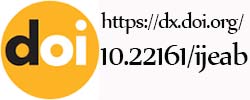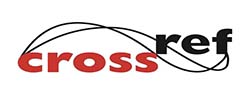Author: Ashraf Nour El-Sadek
![]() DOI: 10.22161/ijeab.91.12
DOI: 10.22161/ijeab.91.12
Keyword: Sowing date, tillage practices, faba bean, New Valley, DSSAT, dry-hot environment
Abstract: The faba bean is a crucial pulse crop known for its high protein content and its ability to fix nitrogen from the atmosphere. The growth and yield of this crop are influenced by various agronomic practices, such as sowing date and tillage method. To investigate these factors, a two-year field experiment was conducted in the dry and hot environment of Egypt's western desert. The experiment aimed to evaluate the yield and its components of faba bean under four different sowing dates and three tillage practices. To accurately simulate the outcomes, the Decision Support System for Agro-technology Transfer (DSSAT) model was employed. This model allowed for the prediction of seed yield, total above-ground biomass, and harvest index based on the varying sowing dates and tillage practices. It was found that the highest seed yield, reaching 4011 kg ha-1 in the first season and 4115 kg ha-1 in the second season, was achieved when the plants were sown on October 15th. Additionally, the seed yield peaked at 3690 kg ha-1 in the first season and increased to 4074 kg ha-1 in the second season when the no-tillage practice was implemented. The other yield components followed a similar trend to the seed yield, responding to the different sowing dates and tillage practices. The DSSAT model proved to be a reliable tool for simulating the seed yield and total above-ground biomass, exhibiting a Nash and Sutcliffe Efficiency (NSE) above 0.80 when compared to the calculated values. However, for the harvest index, the NSE was 0.669 in the first year and 0.772 in the second year. Despite this slight discrepancy, the DSSAT model remains a valuable decision support tool for predicting faba bean yield under various agronomic practices.
Article Info: Received: 07 Dec 2023; Received in revised form: 10 Jan 2024; Accepted: 22 Jan 2024; Available online: 02 Feb 2024
| Total View: 274 | Downloads: 20 | Page No: 115-125 |
Cite this Article:
MLA
Ashraf Nour El-Sadek, P.(2024).Evaluating the Effects of Different Sowing Dates and Tillage Practices on Faba bean Yield Based on DSSAT Model. International Journal of Environment Agriculture and Biotechnology(ISSN: 2456-1878).9(1), 115-125.10.22161/ijeab.91.12
Ashraf Nour El-Sadek, P.(2024).Evaluating the Effects of Different Sowing Dates and Tillage Practices on Faba bean Yield Based on DSSAT Model. International Journal of Environment Agriculture and Biotechnology(ISSN: 2456-1878).9(1), pp.115-125.
Ashraf Nour El-Sadek. 2024."Evaluating the Effects of Different Sowing Dates and Tillage Practices on Faba bean Yield Based on DSSAT Model". International Journal of Environment Agriculture and Biotechnology(ISSN: 2456-1878).9(1):115-125.Doi:10.22161/ijeab.91.12
Ashraf Nour El-Sadek."Evaluating the Effects of Different Sowing Dates and Tillage Practices on Faba bean Yield Based on DSSAT Model", International Journal of Environment Agriculture and Biotechnology,vol.9,no. 1, pp.115-125,2024.
@article { ashrafnourel-sadek2024evaluating,
title={Evaluating the Effects of Different Sowing Dates and Tillage Practices on Faba bean Yield Based on DSSAT Model},
author={Ashraf Nour El-Sadek , R},
journal={International Journal of Environment Agriculture and Biotechnology},
volume={9},
year= {2024} ,
}
























